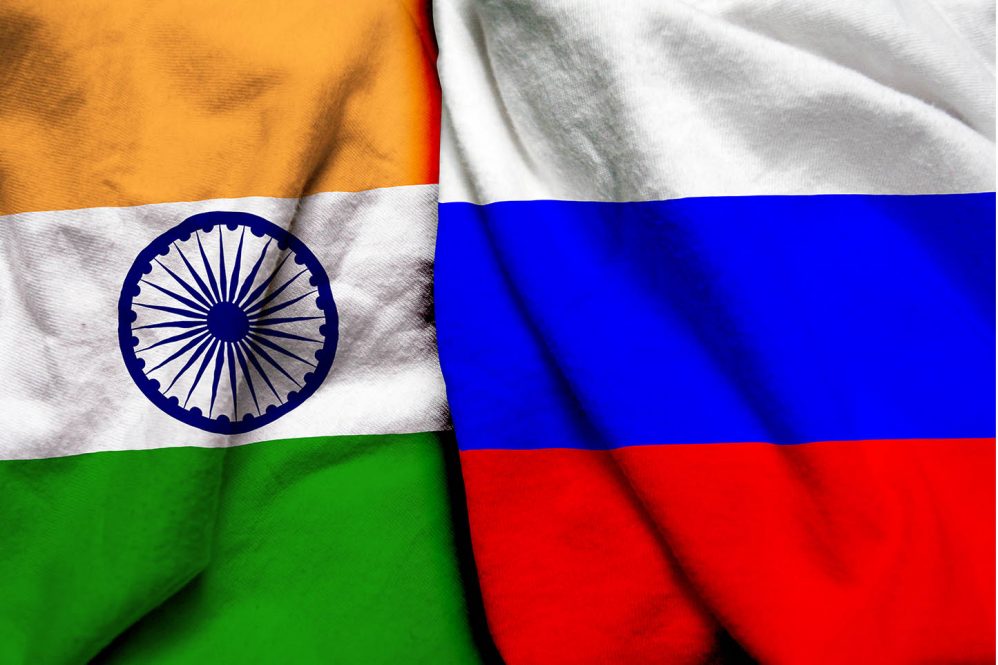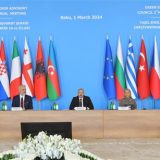BRICS, the acronym for Brazil, Russia, India, China and South Africa, is a group of emerging nations whose geopolitical importance has grown steadily over the years. This group, which brings together culturally, economically and politically diverse powers, is a key player in the new world order. This diversity was underlined at the Johannesburg summit on 24 August 2023, which welcomed the accession of six new members.
This expansion raises questions about the nature of the BRICS, their importance in an ever-changing world, and how bilateral relations between two of its members, India and Russia, have contributed to their influence.
Introduction to the BRICS
BRICS, an acronym coined by British economist Jim O’Neill, comprises five nations: Brazil, Russia, India, China and South Africa. These countries are distinguished by their openness to the international market and their desire to align themselves with Western economies. Initially linked more to macroeconomic considerations than to geopolitical implications, this notion has its roots in the early 21st century, in the wake of the end of the Cold War and the collapse of the USSR.
During the indirect confrontation between the United States and the Soviet Union, a third area emerged, called the Third World by the French sociologist Alfred Sauvy. East or West. Initially, the concept of BRICS seemed vague, as the five countries differ considerably, both in terms of civilisation and politics. However, the concept took shape on 16 June 2009 in Yekaterinburg, Russia, at a crucial summit. It is important to note that this summit was held in Russia at the request of the Russians, a significant fact given the country’s loss of power on the international stage following the fall of communism.
The importance of the BRICS
Significant weight in the global economy
Having reappropriated O’Neil’s term, the BRICS see themselves, in practice, as an economic alternative to the established international order. There is a real desire to stimulate growth and ensure the prosperity of each member country, even if the primary objective is to redistribute the cards of world politics, which until now have been fairly much held by the West.
In reality, this union is the result of frustration on the part of many countries that say they feel unrepresented or poorly represented by the major international decision-making bodies such as the IMF, the World Bank and the United Nations Security Council, despite their large populations and the wealth they produce. In fact, the BRICS together hold just 15% of the votes at the World Bank and 10% at the International Monetary Fund.
These figures contrast with a population representing 42% of the world’s population (3.2 billion people) and an overall Gross Domestic Product of 26% of world GDP. In 2023, the combined gross domestic product of the BRICS finally surpassed that of the G7, a group made up of the world’s seven most industrialised nations, traditionally considered to be the main drivers of the global economy.
These figures clearly illustrate the weight of the BRICS in the world. In addition, the accession of three major oil producers, Saudi Arabia, the United Arab Emirates and Iran, in 2024, will provide the union with a major source of liquidity.
Considerable weight in international geopolitics
In addition to this economic aspect, the BRICS also have considerable influence in the field of nuclear deterrence, with three nuclear powers among them (Russia, China and India). Their active participation in shaping the dynamics of international security is undeniable. Moreover, the fact that two members of the group, China and Russia, are also permanent members of the UN Security Council, reinforces their ability to influence global decisions and policies.
However, to better understand the mechanisms of this alliance and its implications, it is essential to look closely at the political and economic collaboration and cooperation between the BRICS. This research will help to deepen our understanding of the challenges and opportunities that these nations face as they collectively seek to reshape geopolitical and economic dynamics on a global scale.
Political and economic cooperation
The BRICS aim to exert influence not only economically but also politically and geopolitically. The inclusion of South Africa, a regional power, extends the reach of the BRICS to the African continent. Inspired by the spirit of Bandung, the BRICS are challenging the unipolar world order
following the collapse of the Soviet Union and Western economic supremacy, particularly that of the United States.
Post-crisis in 2007-2008, the BRICS are moving towards proposing a more equitable world order, taking their project beyond the economic and political aspects to encompass cultural and societal dimensions. This expansion of perspective, which can be seen at every summit, has met with criticism, despite the crucial role played by the BRICS in redefining the new world order.
The BRICS are not limited to economic cooperation; they also play a major political role. Their convergence of views on key issues such as the reform of international financial institutions, global governance and the promotion of multipolarity strengthens their ability to influence decisions and shape global policies.
The extension of their alliance to strategic nations such as Saudi Arabia, Argentina, Egypt, the United Arab Emirates, Ethiopia and Iran strengthens their geopolitical footprint, encouraging a diversity of opinions and approaches, thereby reinforcing their legitimacy and influence on the international stage.
On the face of it, India and China are taking a similar stance on the Russian invasion of Ukraine, initially refusing to condemn Russia and favouring a peaceful resolution through dialogue. However, important nuances are emerging in the respective vision and positioning of China and India in the Ukrainian conflict. Although both countries maintain relations with Russia, their underlying motivations differ, with China more supportive of Putin’s Russia and India finding it difficult to maintain this closeness.
So the BRICS continue to play a crucial role in the new world order, both economically and geopolitically. Their strategic expansion with the inclusion of new members attests to their ability to adapt to the changing dynamics of the international landscape, consolidating their position as a unified and influential force.
How does the evolution of India-Russia relations, marked by key moments such as the Cold War period, the signing of the Indo-Soviet Friendship Treaty, the expansion of the BRICS, and the impact of the crisis in Ukraine, reflect global geopolitical dynamics and what are the challenges and opportunities for these two nations in an ever-changing context?
History of India-Russia relations: a relationship “against all odds
The origins of a relationship tested by the Cold War
To better understand the dynamics of the relationship between Russia and India, it is essential to go back in time and examine the factors at play during the Cold War. In 1947, India gained independence from the United Kingdom. Under the leadership of Jawaharlal Nehru from that date onwards, India was initially perceived as an ally of the American West by Joseph Stalin’s Soviet Union, as India had chosen to remain a member of the Commonwealth.
Stalin’s death and developments in the Korean War helped to accelerate the rapprochement between the two states. There were two major reasons for this development:
Firstly, the rise of Communist China led by Mao Zedong created points of friction, particularly over borders, which were called into question by China after its invasion of Tibet in 1950. In October 1962, China and its People’s Liberation Army launched an offensive along the Himalayan borders, to the east (in what is now Aksai Chin) and to the west (in Arunachal Pradesh). The Indian army suffered a humiliating defeat due to poorly equipped troops and inadequate logistical preparation.
As for the Soviet Union, despite a rapprochement between Joseph Stalin and Mao Zedong in the 1950s, relations between the two countries cooled, particularly under Khrushchev. This led to the Sino-Soviet break-up in 1963, and even to a border conflict in 1969. This confrontation stemmed from China’s questioning of Soviet leadership within the Communist world.
Another major factor contributing to this rapprochement was the Soviet Union’s response to the United States’ policy of military alliances in Asia and the Pacific. For example, the Baghdad Pact (or Middle East Organisation Treaty) created in 1955, which includes countries such as Pakistan, is gradually drawing closer to Washington. Other alliances such as ANZUS and OASEO should also be considered. Faced with the prospect of containment by its American rival, the USSR under Khrushchev sought to establish alliances that would benefit it.
India, for its part, is pursuing a strategy of circumvention, particularly with regard to its main rival, Pakistan, which is drawing closer to the United States. Pakistan encircles India to the west (with West Pakistan, now the state of Pakistan) and to the east (with East Pakistan, now the state of Bangladesh).
All these factors led to a timely rapprochement between Nehru’s India and Khrushchev’s Soviet Union from 1953 onwards. This rapprochement was also influenced by the Indian Prime Minister’s admiration for the Soviet model and led to the signing of the Indo-Soviet Friendship Treaty in 1971.
Cooperation in economic, strategic and political fields
9 August 1971 marked a crucial date in the history of international relations, when Moscow and New Delhi decided to conclude a Treaty of Peace, Friendship and Cooperation, widely seen as a “quasi-alliance” between India and the Soviet Union. This cooperation extended to a variety of areas, but one of the most significant aspects was the mutual commitment in the field of security and defence.
Military cooperation took the form of a series of support initiatives from the Soviet Union to India. Firstly, India sought to strengthen its military arsenal, which had been weakened by the Indo-Chinese conflict in 1962. Even before the signing of the treaty, India had turned to Soviet armaments to replace an arsenal that consisted mainly of British weapons dating from before the Second World War. This opportunity led the Nehru government to buy military equipment from
the Soviet Union, including transport aircraft. In August 1963, the Indian government acquired the licence to build several hundred Mig-21s. As for the navy, India did not hesitate to buy a large amount of equipment from Soviet shipyards, ranging from submarines to missiles, corvettes and the Krivak class frigates created in the early 1970s.
Under Indira Gandhi’s leadership, India considerably strengthened its arsenal by purchasing a large number of Soviet weapons, particularly in the field of military aviation, warships and tanks, in particular the T-72s, which went into production in 1971, the year of the treaty. Today, the Indian Army uses nearly 2,000 T-72 tanks[3]. According to Gilles Boquerat[4], around $35 billion was spent on Soviet equipment between 1960 and 1990. India was thus the first customer for Soviet armaments outside the Soviet Pact.
In the economic sphere, the Indo-Russian Friendship Treaty has also fostered economic, scientific and technological cooperation. Trade between the two nations grew significantly from the mid-1950s onwards.
India bought steelworks, and part of this trade also involved energy and the purchase of raw materials, in particular gas and oil, paid for in Indian rupees.
Finally, it is important to emphasise the Soviet Union’s unconditional diplomatic support for India, and vice versa. This economic and military support from the Soviet Union enabled India to strengthen its position vis-à-vis Pakistan. The Soviet Union provided substantial support for Indian policy, particularly during the 1965 Indo-Pakistani war, intervening to bring about a ceasefire. Moscow also supported Indira Gandhi’s regime during the third India-Pakistan war, using its veto to back India.
On Moscow’s side, New Delhi’s support legitimised its foreign policies. In 1979, when the Soviets invaded Afghanistan in support of Najibullah’s communist regime, India chose not to condemn the Soviet Union and recognised the communist government in Kabul.
Finally, India’s position as a member of the non-aligned movement enabled the Soviet Union to exert its influence over Third World countries, thereby legitimising its foreign policy, particularly with regard to Afghanistan in 1979.
The Indo-Russian relationship after the fall of the Soviet Union: a relationship in slow motion?
The Indo-Soviet relationship remained strong under the governments of Indira Gandhi and her son Rajiv Gandhi. However, in 1991, the collapse of the Soviet Union called this “friendship” into question, leaving some to consider it obsolete. This was largely due to the escalating opposition between the United States and Communist China, which led the Indian government to revise its strategy. It decided to draw closer to the United States with the common aim of countering China’s growing power in the Indo-Pacific region. At the end of the 1990s, the United States also decided to question its alliance with Islamabad, which had gradually drawn closer to Beijing, thus reshaping the alliances inherited from the Cold War.







